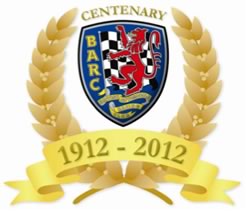
Part XXI
The brake imbalance discovered at Silverstone at the start of the season could not be ignored. We had tried to fix it by using the smaller-pistoned V8 calipers, but it didn’t work. Cutting a slot in the pad is crude. It is time, despite our reluctance, to fit a proportioning valve into the hydraulics.
The plan was not to go down the brand-name route, but something a bit more mass market, and a bit more rugged. That didn’t work, because somebody made what we might call a foolish mistake with a welder, and turned it into a fascinating but useless sculpture. The rear pads were therefore carved again, and we’ll test it.
Here’s where it gets tricky though. With different pads front to rear, I may need to change brake bias as the race progresses and the fronts heat up, as we found at Silverstone. That sounds like a recipe for a mistake. A switch therefore for the rear pads, upgraded to the same spec as the fronts would be smart, but I am damned if I’m swapping pads that have only been in for one meeting. Testing required. Budget does dictate plans, more often than not.
More and better ducting is added, particularly to the rear. It is not hard to improve the rear ducting, as there was none. That there is now some is better. I had a couple of ideas for rear ducting. I am a big fan of using the car’s existing attributes. Instead of having to deal with the radius arms as a problem, use them as part of the design. A fairly simple aluminium scoop and deflector attached to that arm would in theory take air from just behind the floorpan, where tumble and turbulence would otherwise cause drag, and throw it at the rear disc.
But the mock-up is a large and ungainly device. It looks like it would work, but there is no way to support the far side, the disadvantage to attaching it to the radius arm is that it moves, so you cannot attach it to the shell, and though a tie-wrap hinge solution often works, in this instance it sounds like a wonderful way of throwing the ducts at someone’s windscreen halfway through testing. A more conventional scoop and flexible ducting solution is chosen instead. Same plan, but a more robust execution, and £90 spent I didn’t want to. With more time, or thought, perhaps the other plan would have been better. Maybe on the next car. But one.
The quest for weight leads to a change to the rear end, twelve easy kilos shed from the bootlid takes the car down, theoretically, to about 1350kg with fuel and driver. More if I had breakfast. I want the boot to remain hinged, which is a problem with fibreglass. Three options. 1. Don’t. 2. Retain the original hinges, bolted straight through the skin to some alloy spreader plates. 3. Swap the hinges for something external, chrome, and obvious. TR4, as it turns out. Bear then banned me from fitting hinges, and I ended up with 4 pins, just like everyone else does. Damn.
It’s also time for a 3.77 diff, but is it? Everyone seems to swear by ever-lower diffs, but is that the answer? The 3.54 is just a hint too tall in some situations. But it has advantages in places, skipping a couple of gearchanges at some tracks, the cost is in other situations when you really want 3.5th gear. At Brands, for example, holding 3rd gear from Druids all the way to the main straight is actually very helpful, but you pay for that gearing with a difficult gear selection at Paddock. No such thing as a perfect solution. With a 3.77 I’d have more gearchanges, but it would be perhaps faster at Paddock. Alternatively, work on the handling more, get the apex speed up a bit, problem reduced.
I think the 3.77 will wait, and I think it is track-specific. It will not always be an advantage. If we’re going to play that game, it wants two complete subframes. If we’re playing like that, we want to modify the car to do it, and both subframes for swift replacement of the shocks. Or buy more shocks. It’s not money, but time.
The missing ingredient from a spare subframe is the diff. Building one of Bear’s super-special diffs is not simple, but that’s his domain. All I have to do is buy the bits. It’s actually cheap work, when you think about it, because I get his time for free, the machining is done for pin-money, and the parts, in racing terms, are not expensive. When the BMW boys are paying £1500-2000 for a diff, £300 thrown at a Jag diff isn’t big money. And it works. I can tell you that for free. How I survived some of the crap I’ve run in the past I do not know, the one that unexpectedly turned itself into an open diff under the trees at Oulton just as I tried to thread a 1600kg car through Druids left a stain on my driver’s seat.
At the front end, more castor. We still have understeer, which may actually be the result of the diff being pretty good. Crank on some castor, see if that assists. We’ve already moved the seat a touch to get some more muscle to the wheel, so we can add some steering weight. Testing would later prove that this worked.
That’s done by stealing the top arms from Christine, Bear solved this issue in 2010 and we built Helen to be able to accept castor without beating the shell with a hammer. Bolt-on parts, for us, are an amazing, infrequent, luxury. Racing an XJS is usually a tale of bespoke pieces, and a file. And a hammer.
Finally a supplier came up with a new rear hub, I’d been chasing that for weeks but it’s the usual tale, can’t get XJS, XJ40, X300, X308. Can get XK8. It is the same concept, but it does not actually fit. Which was an expensive pity. That would be later addressed by buying the driveshaft to match, and that finally gave us the brand new, beefier, hub we’ve been waiting for.
So, make it stop better, try to give it some more front end bite. Shed a few kilos. Losing rear end weight is not always a great plan, but it’s a balance shift of under half a percent, and I’m certainly not sensitive enough to notice that.
She was nearly out of rubber, but the R888R is not yet available in my size, and I’m not buying until it is, so we’d be on slicks by the end of Brands, or praying for rain.
As Brands panned out, the above modifications were a mixed bag. The castor change worked, less understeer, the car took pole position. The brakes did not. A desperately-late lean on the pedal put us backwards in the gravel with two ruined rear tyres, the imbalance front to rear was not noticeably affected by the cheap and cheerful fix, we got that plain wrong. With any fundamental problem, driving round that problem is fine and well in testing, but if the heat of combat your brain has an adrenaline meltdown and leads you to push beyond the safe limit, you’re in trouble you’re not coming back from. The brakes therefore became a must-fix item.
The weight balance, as predicted, did us no harm at all. In the rain, the car was, as ever, unbeatable, and that saved the day in race 2, but she used to be better. Even I can feel that the reduced weight has stolen some of her grip. There is, currently, no way around that. But if she’s winning races from the back of the grid in the rain, good enough might have to do for now.
To address the brakes after Brands, finally we binned the Jaguar master cylinder, and Bear finished adapting his home-made twin master cylinder setup, a project he started in 2010 and then shelved. This took a lot of time, because space is limited, nothing commercially available really seems to fit without buying an aftermarket pedal box. We wanted to keep the pedal box and servo as it is. With time and inspiration came a design that achieved all. Twin cylinder, balance bar, remote adjuster in the cockpit, like a proper racing car. And it works. You can indeed adjust the thing on the fly. There were some teething issues, which were finally sorted for the second race at Snetterton, but it worked, and you can stand on the pedal without fear. There is more tuning to be done here, but the concept is now sound, and with some more fiddling will come a proper late shove on the pedal that does not turn the car around.
In the heat of combat, the brain does not always work properly. A big sticker and an arrow on the steering wheel reminds me which way to turn that brake adjuster. To an outsider, the letter “R” and an anti-clockwise arrow on the steering wheel may appear confusing.
A little further weight loss came in the form of an alloy diff plate. We have, in the past, had diffs breaking free. The rear subframe is not a great piece of work, we have to brace the subframe up, but even after you do that the diff itself tears free, break bolts etc. We therefore use a ¼” steel plate in place of the original tin, and high tensile bolts to get hold of the diff 12 extra ways. Seems to be largely working thus far, but it’s heavy. Swapping it for alloy loses some rigidity, but also 5kg. It’s worth the experiment. Testing again would show that I can’t feel the difference. Whether the total of 20kg knocked off the rear this season would be noticeable if done in one instalment, or not, I also doubt.
Thus equipped, we raced Snetterton. Last race of the season, and it’s a combination of power and handling. Helen set fastest lap in the second race, with a half-respectable time that I know I could knock another second off exactly as she is, just with practice and familiarity. The problem with constant evolution is you’re always chasing a moving target, and I’m not in the car often enough these days to do that. But we’re on the right track, at least. This year has moved her on again. Technically, 2015’s fiddling has given us 3 race wins from 6 starts, and 2 of them were from dead last. I don’t think we’re done yet. There are a couple of game-changers that we could now invest in, but, as ever, it’s money. When do you stop? Well, you can’t take it with you.
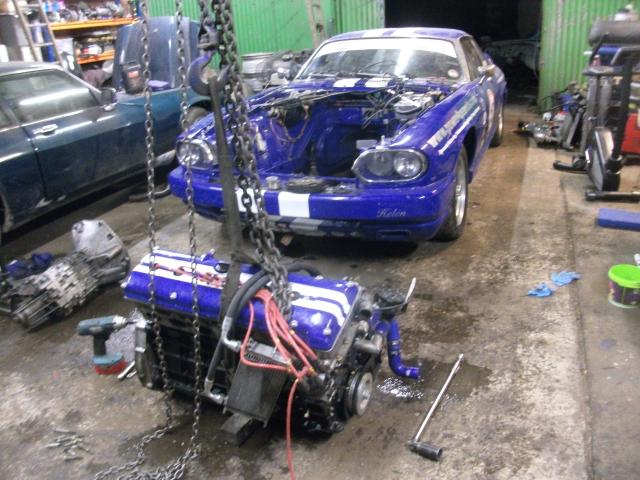
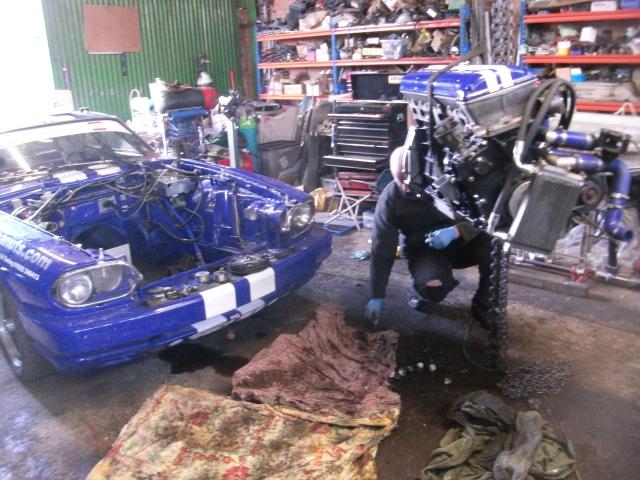
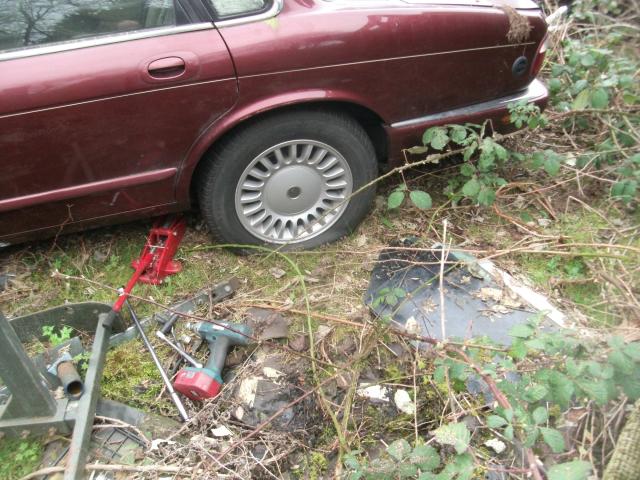
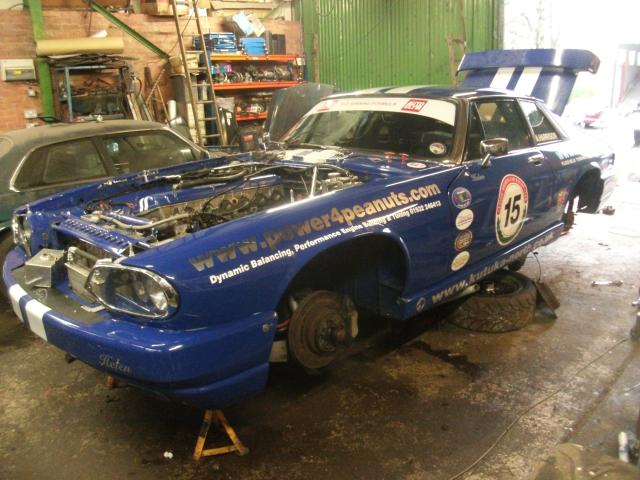
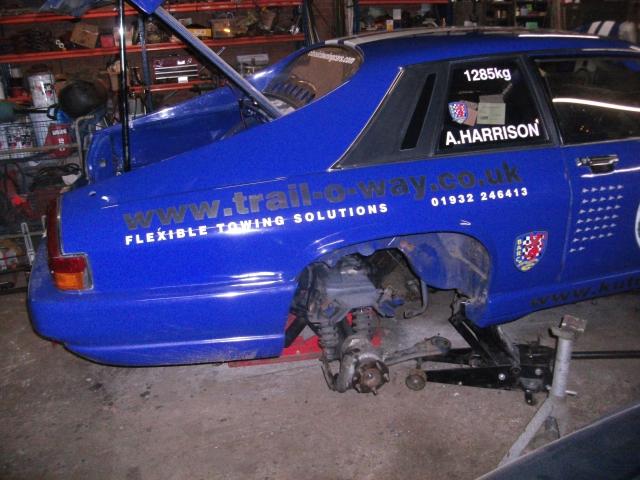
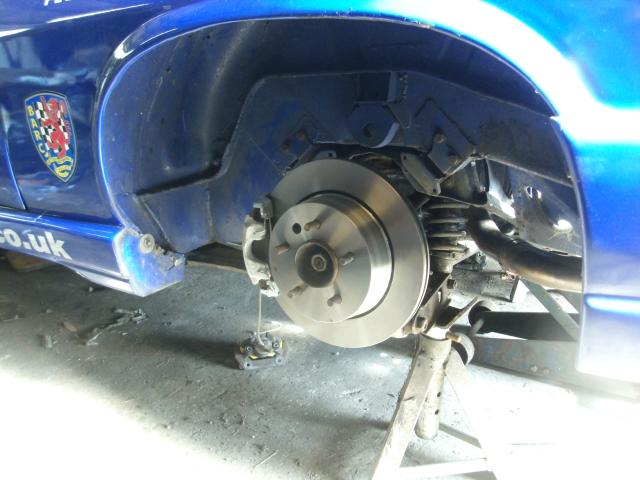
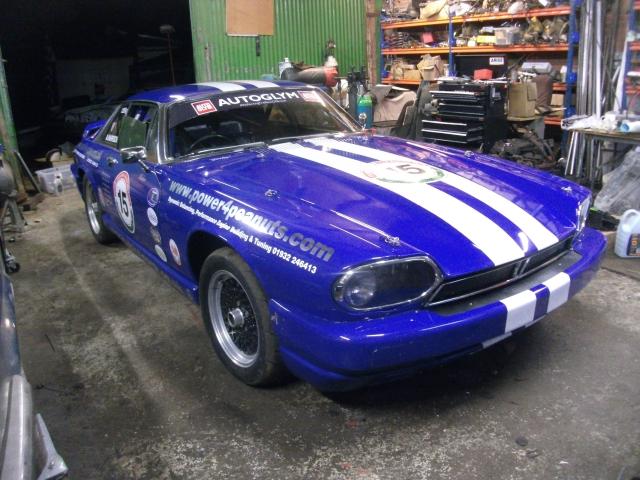
You can just whistle, and this jumps straight out now. After a winter of road cars, this was a joy to work on.
There may have been a slight spillage incident caused by a holed drip tray. Oops.
Rear subframe was removed, dismantled, and the diff internals inspected, just to be sure. The diff was fine, but I found other niggles. Which is why we do it.
In the traditional pre-race stance, no wheels and many parts removed. Yes, that is still a steel bootlid.
Kneeling in brambles to salvage V8 calipers is not the most glamorous aspect of motorsport. But it is cheap.
The vented rear discs are something I bought in 2010 and never needed. I can't claim this to be forward planning, I forgot I had them. Bear knew. Bears are handy.
And we're calling that ready. 2 whole days before we have to depart for Silverstone. A new record.